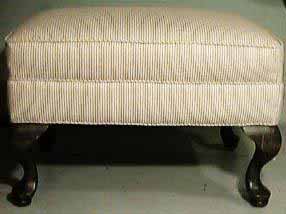
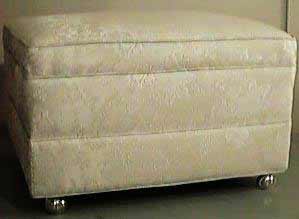
Both of these ottomans are covered in the same manner. The bands are attached separately and a single welt is stapled to the base for a more finished look.
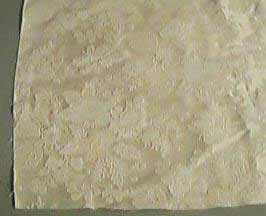
Cut your material about an 1 1/2" larger than your finished measurements (frame size). Now we're going to use a trick you learned in basic sewing, cutting a bow in the top material. We do this for the same reason as we did in the throw pillow; to prevent the sides from appearing to cave inwards. Start from the corners and trim off about 3/8 to 1/2" narrowing to nothing as you near the center of the plate.
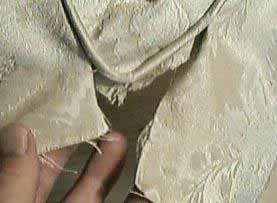
See How to Sew a Boxed and Welted Cushion. On this job we were able to cut the boxing up the roll in one piece. The boxing should be pieced at the corners where necessary. Many fabrics will need to pieced at two corners, plaid fabrics at all four corners. Start the welt material before the corner. In this photo we've already sewn most of the welt and boxing down and will now sew the boxing ends together before finishing it off.
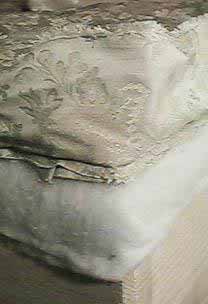
We take our completed top and place it with seams facing down on top of the ottoman padding. Pull the cover down at each corner to prevent the seam from twisting. You can add a bit of loose Dacron to the corners if they need it.
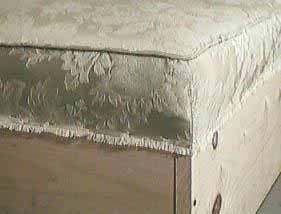
Next decide the height the top should finish. You can set up the job as with the ottoman in the previous segment. Simply cut a piece of cardboard strip to the right size from bottom of frame to under the welt to use as your ruler. Do the same for bands and skirts.
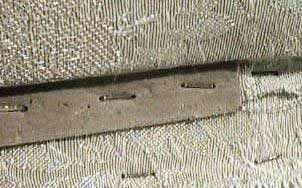
Here is a close-up of a band. On a band for an ottoman you can sew the ends together then sew the welt all the way around it. Open the seams as you sew over them. Then slide the band down over the top into position. Have the seams fall on the corners. Put a few staples in at the proper height then go around the seam with cardboard strip tucked tightly against the welt. Also see INSTALL OUTSIDE ARMS, BACKS, BANDS, AND PANELS.
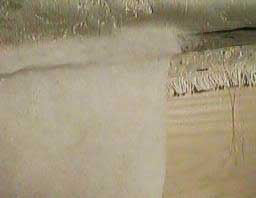
Tack or staple a layer or half layer of cotton or bonded polyester over the cardboard strip. Then pull the staples part way through with your fingers to leave a smoothe surface.
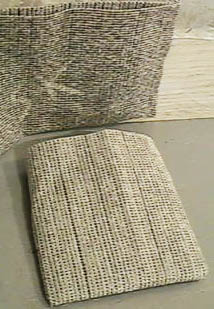
Here's an easy way to make a tailored skirt. Decide the finished height, add the seam allowance then double the fabric and fold over to make a self-lined skirt. Add a 1/4" or so to the width beyond the seam allowance because they have a tendency to shrink up a little. Make the corner flaps about 6 to 8" wide.

You can either sew all the pieces together and install like a band or tack the sewn welt on first and the pieces on individually. CAUTION: You must take into consideration whether a piece of furniture sits on a carpet or hardwood floors before deciding how high the skirt should be. A heavy piece of furniture can sink over an inch into padded carpet.
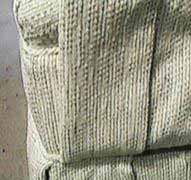
This is another way of doing a self-lined skirt by folding the ends over and hiding the seam.
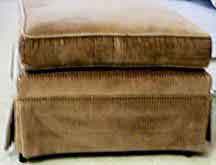
This is an attached pillow top ottoman.
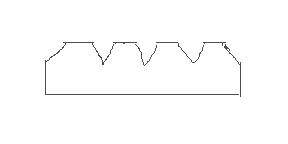
The fabric under the cushion top is cut like this rough drawing. Best to use the old cover for a pattern if you can. After the cutouts are sewn together this piece is sewn to the bottom cushion plate BEFORE the rest of the cushion is constructed. It must be centered just right. It really shows up when an ottoman top is off center. If you are using a fabric that it doesn't matter which way the fabric runs you can more easily make a cover like the one at the beginning of this series and sew it to the bottom plate.
You can then sew the rest of the material like a regular boxed cushion.
Wondering how to fill this thing? Well here's one way: After the above
sewing is completed cut a diagonal opening in the bottom plate (it's hidden).
You can put a zipper in it if you want (raw edge okay) or hand sew it closed
after inserting the filling.
